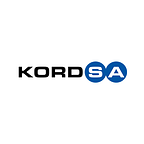Data Collection and Visualization Systems for Production Lines
Kordsa’s Turkey facility is home to numerous industrial machineries of different scales. Obtaining, recording and serving data in different forms has been done for many years across different parts of the facility. In 2019, a new infrastructure for data collection was installed in the tire cord fabric production lines. It integrates the process and machinery data from all the treatment lines and dipping chemicals preparation units, as well as registering energy consumption and weather statistics. Data are collected and recorded and made available to production, quality assurance, maintenance and R&D teams with different levels of complexity, detail and visualization and, tailor-made for each team.
In line with Sabancı Holding’s digitalization goals, making data available for analysis has become an important part of the facility’s Kordsa’s digital transformation. To facilitate the use of data in a complex environment where there are many sources of information and where data analysis can serve different use cases, it is vital that data is properly organized, sampled at useful junctures and be acquired in an uninterrupted manner. Data needs to be simple to manage, search and visualize.
In the past, as in many other industrial environments, process data was recorded and kept locally in SCADA computers that controlled individual machines. This approach, however, brought several drawbacks. The collected data content and structure was hard to organize and read afterwards, the data stored in SCADA had to be extracted manually, and it was hard to detect interruptions due to misconfiguration or power outages.
To overcome these drawbacks and prepare production facilities for future requirements, a team was formed, and the data collection system was unified using Kordsa’s existing intranet structure while adding layers of security to assure that data is both accessible and secure. All the PLC and SCADA systems were secured behind individual firewalls. To prevent a TCP/IP clash of machinery while ensuring that only the required components can be reached via intranet, a Network Address Translation (NAT) process was used. This architecture allowed Kordsa to centralize and unify data collection across machinery dispersed across a 0.3 kilometer-square area. Moreover, supervision and modification can now be done remotely and without interfering with the working equipment.
Once the collected data is made available on the cloud, it can provide the basis for numerous applications and use cases. Kordsa has already made its data available in raw, processed and visualized forms for applications such as process control, quality checks, auto-generated batch reports and data analysis. Certain data are also live-streamed to ANDON screens for remote supervision.
Currently, on average, 250MB of raw data and 60 batch reports are generated on a daily basis. However, extracting information and creating visually understandable charts as well as processing the data for process control requires domain knowledge as well as data-processing skills. Thankfully, our technical, production, R&D and maintenance teams possess the data-processing and analysis skills (such as six-sigma) needed to maximize the use of data.
YAVUZ KOZAK,
Global Technology, Project Leader, Kordsa
